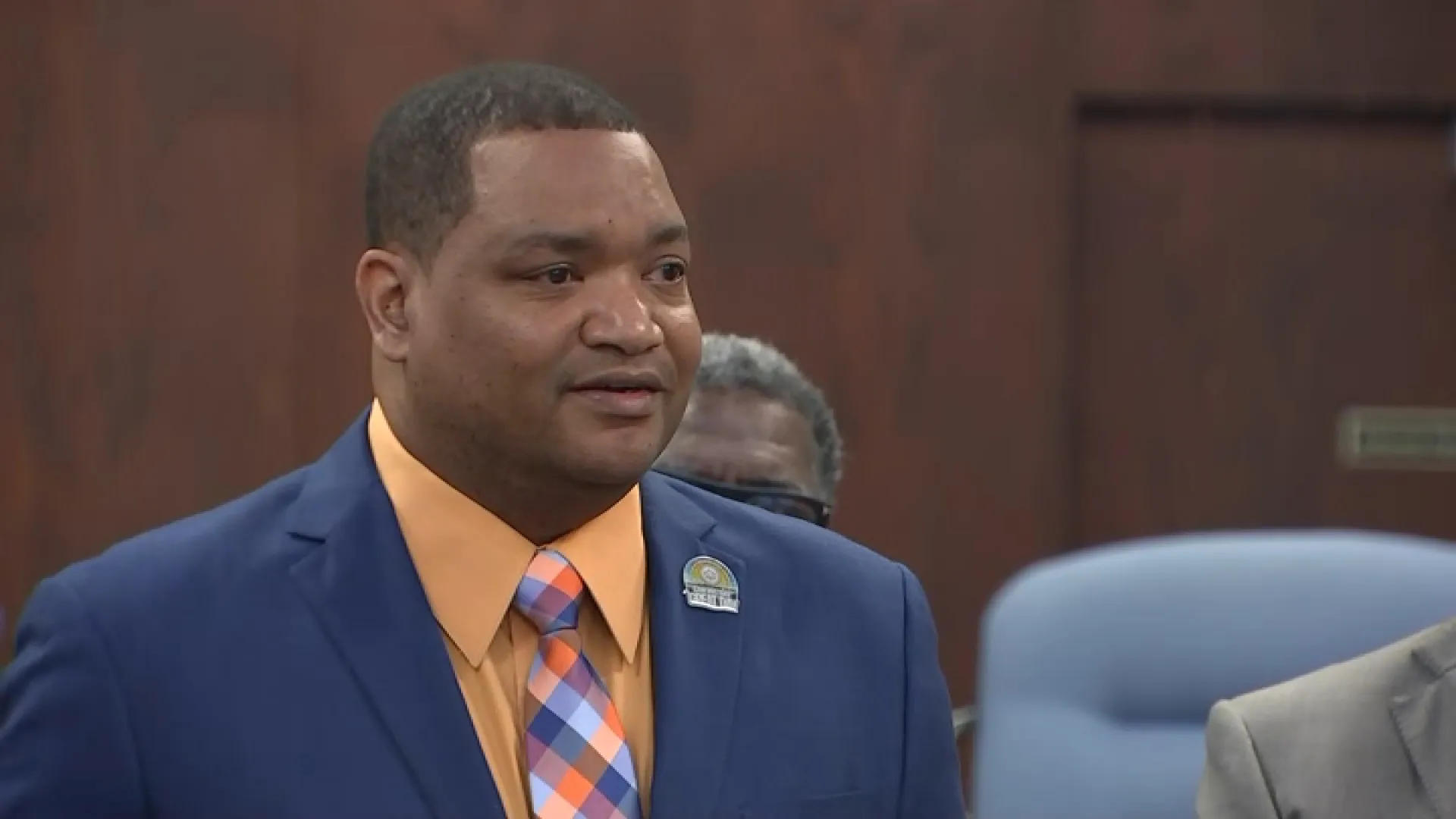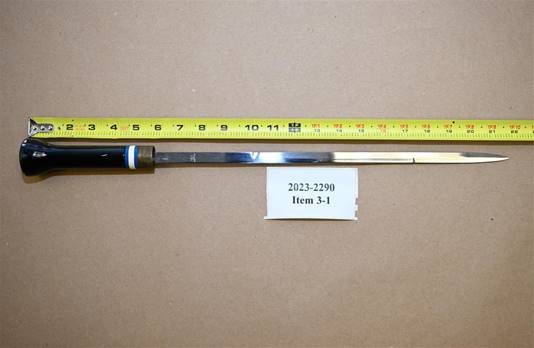What to Know
- Three of five law enforcement agencies involved in high-profile chases in January would not make their pursuit policies public.
- Pursuits in Pennsylvania rose for the fifth straight year in 2017, the most recent year where data is available.
- Pursuits by Delaware state police are also up in recent years. Most chases in both states are initiated because of traffic violations.
Meghan Stone-Kirts still can't find out from Wilmington police, or Pennsylvania state police, or Delaware state police, what happened leading up to a devastating crash Jan. 9 on Interstate 95.
That day, she and her family became caught in the middle of a chaotic, violent police pursuit that began in Delaware's biggest city and ended in Philadelphia. Her 3-year-old son, David Tillman, suffered the worst injuries of several people hurt in a pileup after the chase crossed state lines. He suffered multiple skull fractures and spinal injuries.
She remembers her car getting thwacked multiple times by police vehicles.
"One minute you're leaving Denny's and you're driving to New York, and the next minute, you see a black SUV take off your mirror," Stone-Kirts said in an interview. "I was getting ready to pull over, then next minute, I'm being hit by several cops."
As Stone-Kirts and her husband, Bill Kirts, were trying to pull three children from their wrecked vehicle, she said her family was an afterthought: "Nobody asked, are we okay. They're like, 'Oh, we're chasing a murder suspect.'"
Local
Breaking news and the stories that matter to your neighborhood.
That suspect, Dejuan Robinson, who was wanted in connection to multiple homicides, remains on the loose. It still is unclear if he was in the vehicle that eventually crashed into a bus in Philadelphia.
The chase was one of three incidents in the first nine days of 2019 that involved Delaware authorities and crossed state lines into Pennsylvania. The other two involved a suspect, Keith Campbell, who eluded Delaware police Jan. 1 and eventually crashed in South Philadelphia, killing three people; and a naked driver heading the wrong way on Interstate 95.
Stone-Kirts's futile attempts thus far to get answers — "I've called Wilmington police 36 times" ... "Pennsylvania won't even answer our phone calls" — may be a result of the broader secrecy that surrounds police pursuits in Delaware and Pennsylvania.
Three of five law enforcement agencies that took part in the January chases told NBC10 that their pursuit policies are not public record: the City of Wilmington and the Town of Newport, the Delaware municipalities where pursuits of Robinson and Campbell originated, respectively; and Pennsylvania state police.
"PSP does have a written regulation concerning vehicle pursuit," Pennsylvania state police spokesman Ryan Tarkowski said in an email. "It is not publicly available for the obvious reason that public knowledge would allow too much insight to people who would want to run from the police."
Philadelphia police have their policy posted online, and Delaware state police provided their policy to NBC10 through a right-to-know request. The Delaware agency's guidelines, however, are redacted in sections that include reasons for pursuing suspects and protocols for communication with other law enforcement authorities during chases.
The lack of transparency doesn't answer questions that arose from the string of interstate pursuits.
NBC10 examined all publicly available communications between state police agencies and municipal departments, and sought more details about the policies that govern those communications.
During the incidents involving Robinson and Campbell, Delaware authorities notified Pennsylvania state police's Media barracks in Delaware County, according to the law enforcement agencies. But communication between the state agencies and Philadelphia is less clear.
Philadelphia police would not discuss communications leading up to the fatal Mummers crash early Jan. 2, but city police did say Wilmington police dispatch told Philadelphia police dispatch by telephone of the Jan. 9 pursuit of Robinson.
Police chases rose in recent years in both states, according to records reviewed by NBC10.
Pennsylvania state police releases an annual report on the hundreds of police chases involving all law enforcement agencies in the Keystone state. The most recent report, for 2017, showed an increase in pursuits for a fifth straight year.
Delaware state police provided pursuit statistics for its own agency that showed high numbers of pursuits in recent years compared to earlier in the decade.
"We're very proud of our policy, especially our pursuit policy. We regularly and consistently review that policy," Delaware state police spokesman Richard Bratz said in an interview. "It’s always looked at to see if any adjustments need to be made, but we’re very proud of our current policy."
Bratz added that the agency is consistently analyzing pursuits, from a cross-department communications standpoint and for overall outcomes.
"I can tell you right now, the communication, if there is a lack of communication, we look at that as a chance to learn something. We’re not perfect I can tell you that," he said. "We look at that as an opportunity to say, 'Hey, how could we do things better?'"
Delaware state police for the last five years have averaged 108 pursuits annually. The vast majority of those events have ended in two ways: the chases were called off or the suspect was caught. Only 16 times in five years did pursuits end in a suspect eluding police.
2019, however, got off to a very bad start for the agency.
In the first 10 days of the year, five pursuits involved Delaware troopers. Four ended with the suspect eluding police, according to data provided to NBC10.
The data shows Delaware troopers called off pursuits 160 times since 2014. Bratz, the spokesman, said troopers always weigh the value of continuing a chase versus the threat to the public.
In both states, a majority of chases in the last five years began when troopers noticed traffic-related violations.
A police expert, Geoff Alpert, said it is common for minor violations to most often pre-empt pursuits.
"We see across the country: Maybe 60 to 70 percent of the pursuits are for traffic," Alpert, a criminal justice professor at South Carolina University, said. "A very limited number, maybe 10 percent, are for violent crimes. The rest are for property crimes."
He said the root cause of the pursuit should dictate when to call off a chase.
"It has to be something where the person has either threatened to or has hurt another person. Otherwise it's just money and it's just property," Alpert said. "We're risking people's lives by these chases and I think we've got to be very, very concerned about the potential for a collision, an injury and a death."
That potential became reality for Stone-Kirts's son, David Tillman, who suffered multiple skull fractures and damage to his spine. The two traveled back up I-95 in February from their home in Baltimore to visit specialists at Children's Hospital of Philadelphia. The little boy may need more surgery, Stone-Kirts said.
"We have no answers from the police. They haven't contacted us," she said. "It's been one month ... The guy's not caught, so it makes me ask them, 'Are you really searching for this guy?' What are you guys hiding from us?"




